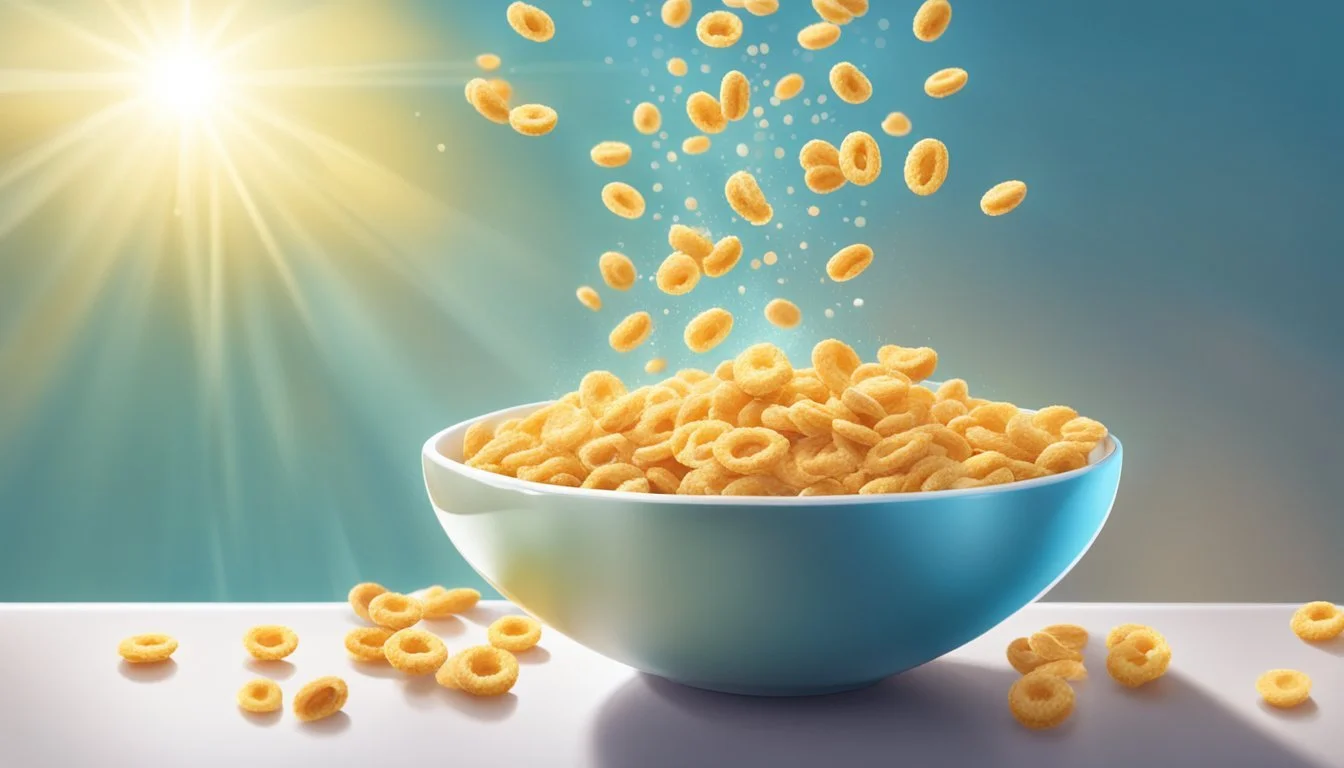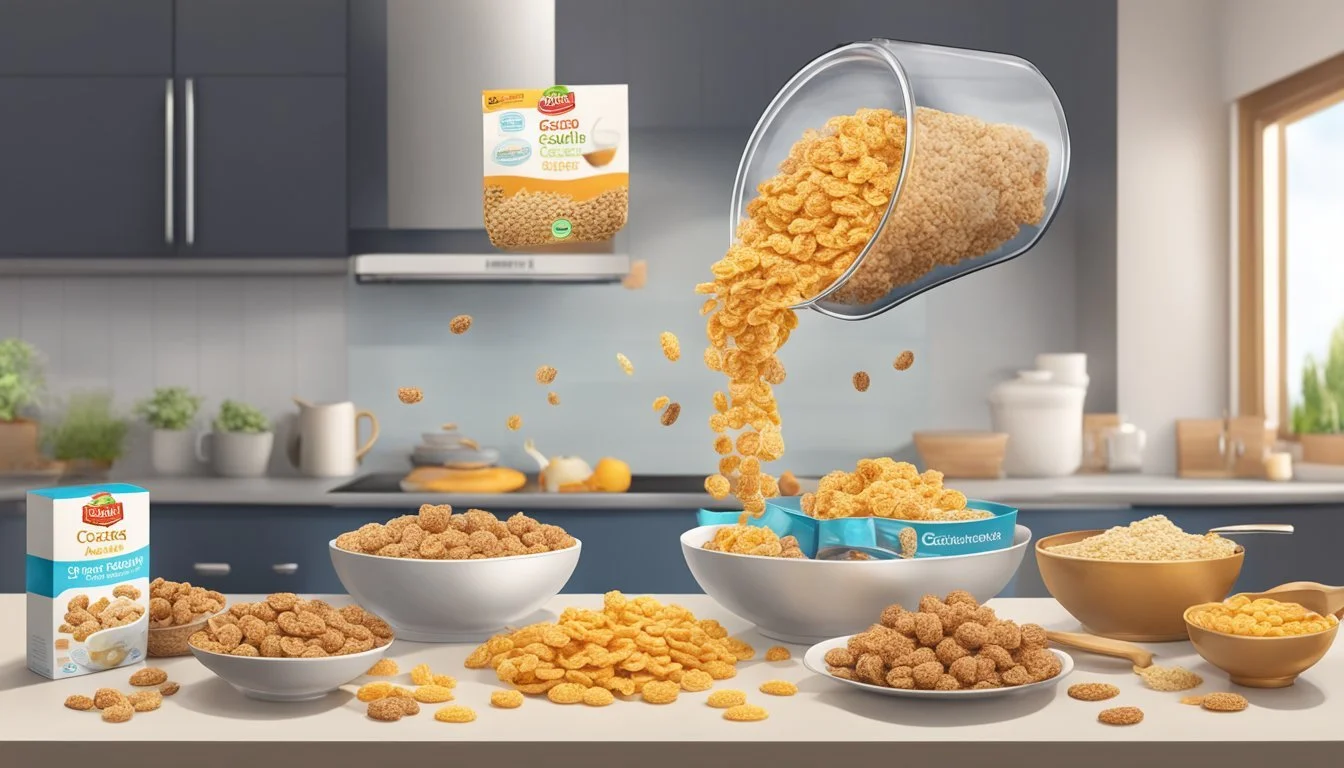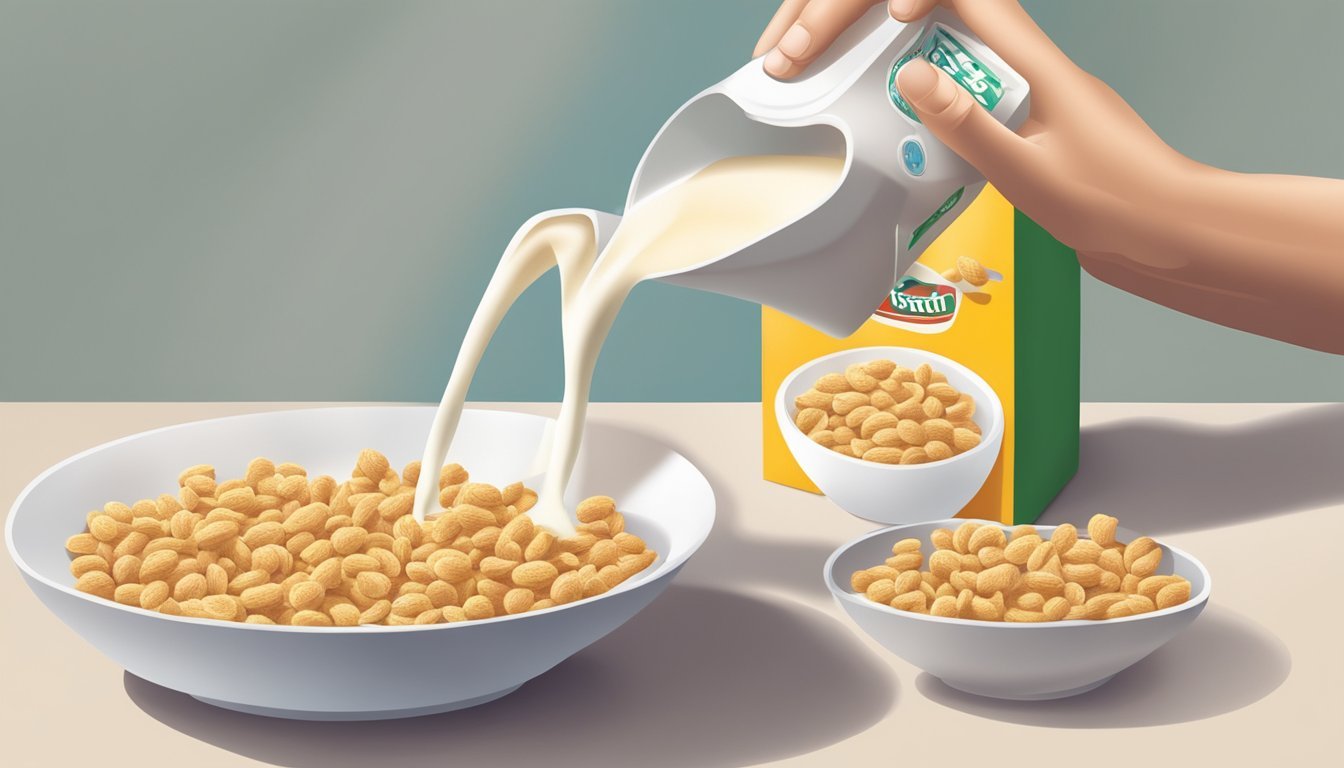Reviving Stale Cereal
How to Enjoy a Crispy Breakfast Once Again
Stale cereal can be a disappointing start to the day, turning what should be a quick, crunchy breakfast into a lackluster experience. However, this common pantry plight is not irreversible. With a few simple techniques, that once-crisp cereal can be revitalized and restored to its former glory. Indeed, there’s no need to let a subpar bowl dampen one's morning routine or to waste food that’s easily salvageable.
The key to rescuing stale cereal lies in understanding the science of staleness, which is primarily the result of moisture migration and loss of crunchiness over time. By removing this unwanted moisture and ensuring proper storage, the cereal's texture can be rejuvenated. Traditional methods of reviving cereal often involve the use of an oven or a dehydrator, which effectively draws out the moisture and brings back the satisfying crunch.
It's essential, however, to not just focus on restoration but also on prevention. Proper storage techniques, such as using airtight containers and ensuring the cereal's packaging is securely closed, can significantly extend its shelf life. By adopting these preservation methods, households can enjoy fresh and crispy cereal for breakfast while minimizing food waste.
Understanding Stale Cereal
When cereal loses its freshness, the issue goes beyond mere disappointment; it's the consequence of a scientific process influenced by various factors.
The Science of Staleness
Staleness in cereal occurs when it's exposed to moisture and air, leading to a loss of its original texture. The desired crunch of cereal comes from the low moisture content within its structure. When cereal is exposed to air, it absorbs moisture, leading to a soft and chewy texture that is generally perceived as less appealing. This change in texture is often a key indicator that a cereal has gone stale.
Factors Affecting Cereal Freshness
Several factors can accelerate the staling process of cereal:
Exposure to Air: Cereal packaging that is not resealed properly after opening will admit air and humidity, speeding up the staling.
Moisture: Cereal must be stored in a dry environment to maintain its crispness. High humidity environments contribute to faster degradation.
Temperature Fluctuations: Frequent changes in temperature can cause cereal to go stale quicker.
Expiration Date: While a "best by" date doesn't always signal the immediate staleness of cereal, it indicates when the cereal is expected to start losing its optimal texture and flavor.
By controlling these factors, one can maintain the freshness and desirable qualities of cereal for longer periods.
Preventive Measures for Freshness
Ensuring cereal maintains its satisfying crunch starts with proper storage and handling directly after purchase. The following subsections detail strategies to minimize the risk of cereal becoming stale.
Proper Storage Techniques
Right after opening their cereal, consumers should minimize exposure to air by rolling the inner bag tightly. Some people might even prefer folding the cereal box's top flaps inward after use to further seal the contents. These practices help to preserve the cereal's freshness.
Choosing the Right Containers
For those who want to go the extra step, transferring cereal into an airtight container is a reliable method. The container should be of appropriate size to limit the amount of trapped air and be constructed from materials that don't impact the cereal's taste. Brands often market specific cereal storage containers with these properties in mind.
Ideal Pantry Conditions
Storing cereal in a pantry that is cool and dry helps prolong its shelf life. The ideal conditions prevent moisture buildup, which is a primary cause of staleness. Below are recommended pantry conditions to preserve the freshness of cereal:
Pantry Condition Benefit Cool Temperature Reduces risk of cereal becoming soft Low Humidity Prevents clumping and sogginess Dark Protects nutrient integrity
By adhering to these preventive measures, consumers can enjoy their cereal's crisp texture for longer periods following the initial opening.
Revival Techniques
Reviving stale cereal is straightforward through the use of heat to reduce moisture and restore crispness. Each method below leverages a different kitchen appliance to achieve a satisfying crunch.
Oven Toasting Method
One places the stale cereal on a baking sheet in a single layer. The oven should be preheated to 350 degrees Fahrenheit. One then toasts the cereal for about 5-10 minutes, which helpfully draws out the moisture, resulting in a pleasingly crispy texture.
Stovetop Crisping Hack
For those who prefer a quicker method, one can heat a dry skillet over medium heat and toast the cereal directly on it. Stirring the cereal constantly ensures even heat distribution and prevents burning. This usually takes a few minutes, and the cereal regains its crunchiness as it cools.
Microwave Moisture Reduction
A less common technique involves using a microwave. Here, one spreads the cereal on a microwave-safe plate and heats it in short 30-second bursts, checking its texture between intervals. This method can bring back crispness but requires careful attention to avoid overcooking.
Creative Uses for Stale Cereal
Stale cereal need not be wasted; it can be repurposed into a variety of culinary applications. One can reintroduce a satisfying crunch and flavor into a range of dishes, both sweet and savory.
Homemade Granola Mix
Stale cereal like oats, puffed rice, or wheat flakes serves as an excellent base for a homemade granola mix. One can mix it with honey, a variety of nuts such as almonds or walnuts, dried fruits (What wine goes well with dried fruits?), and a dash of cinnamon or vanilla. Spread out on a baking sheet, toast the mixture lightly in the oven to give back its crispness.
Cereal-Based Dessert Toppings
Transforming stale cereal into dessert toppings is a creative way to enhance sweet treats. One can crush rice krispie cereals or similar flakes and sprinkle them over yogurt, ice cream, or use them as a base for fruit crisp toppings. They add an extra texture and often a pleasant contrast to softer desserts such as puddings or mousse.
Crunchy Salad Toppings
Stale cereal can be converted into crunchy salad toppings. Crushed flakes or cheerios can replace croutons to provide a different type of crunch that pairs well with fresh greens or a hearty Caesar salad. Additionally, toasted savory cereal can complement the flavors found in vegetable or pasta salads.
Breading for Savory Dishes
Sensitive to texture, stale cereal like cornflakes can substitute for traditional breadcrumbs in breading for savory dishes. Use it to coat chicken cutlets, fish fillets, or even as a binding agent for meatballs. The cereal adds a unique crisp texture once cooked, revitalizing a potentially dull or soggy coating.
Comparison of Cereal Types
In evaluating the variety of breakfast cereals on the market, one can discern differences in their shelf life and pricing structures based on brand and type.
Effects on Longevity by Brand
Brand A
Corn-based cereals: Generally have a longer shelf life due to low moisture content.
Rice-based cereals: Similar longevity to corn-based; however, lighter textures may not maintain crispness.
Brand B
Whole grain cereals: Tend to maintain freshness longer if stored properly due to robust nature of grains.
Oat-based cereals: Vulnerable to staleness without proper sealing due to inherent oils.
Brand C
Bran cereals: High fiber content supports a long shelf life, but may absorb moisture if not stored correctly.
Price vs. Shelf Life Analysis
A comparison between cost and shelf life indicates a pattern among different breakfast cereal types:
Lower-Priced Cereals
Typically corn-based with a simpler manufacturing process.
Shelf life: Extended due to simpler ingredients; average of 6-8 months.
Mid-Priced Cereals
Includes whole grains and oat-based options with added nutrients.
Shelf life: Moderate, around 4-6 months, depending on added ingredients' sensitivity to air and moisture.
Higher-Priced Cereals
Often contain premium ingredients or assurances such as organic or non-GMO.
Shelf life: Variable; organic materials may not last as long as their conventional counterparts.
Maximizing Cereal Enjoyment
Selecting the right cereal and enhancing it with flavors and ingredients can transform a simple bowl of cereal into an extraordinary breakfast experience. The goal is to retain the cereal's crunchy texture, while pairing it with flavors that complement its taste profile.
Pairing with Complementary Flavors
To preserve crunchiness, timing is crucial; mix cereal with cold milk just before eating. Opt for cool, refrigerated milk to contrast the texture of the cereal. For cereals like Cinnamon Toast Crunch, a dash of extra cinnamon or a spoonful of honey can elevate its warm, spiced flavor.
Milk Temperature: Cold
Flavor Enhancers for Cinnamon Cereal:
Cinnamon sprinkle
Honey drizzle
Innovative Breakfast Ideas
A satisfying breakfast goes beyond the bowl. One can create cereal breakfast bars by mixing their favorite cereal with melted marshmallows and then letting the mixture set. This can add a twist to the traditional cereal routine, making it more exciting and transforming the breakfast into a more portable form.
Cereal Breakfast Bar Ingredients:
Cereal (e.g., Cinnamon Toast Crunch)
Melted marshmallows
Butter (optional)
Cereal Customization Tips
Personalizing a bowl of cereal can lead to a more satisfying and enjoyable breakfast. Start with a base of crunchy cereal like Cinnamon Toast Crunch and then add toppings such as sliced bananas or strawberries for added freshness, or a scoop of yogurt for a creamier texture. Tailoring toppings to personal preference can make for a more delightful meal.
Fresh fruit (e.g., bananas, strawberries)
Yogurt
Nuts or seeds
The Economics of Cereal Consumption
In discussing the economics of cereal consumption, one must consider both the spending habits of households on cereal and how cereal waste can impact a family's budget.
Analyzing Household Cereal Spending
Households typically allocate a portion of their grocery budget to breakfast foods, including cereal. Cereal prices can vary widely, from store brand varieties costing a few dollars to premium brands that may command higher prices. Consumers may also be influenced by health trends or novelty factors, which can shift spending patterns within this category. Data from market research firms or commissions might reveal that on average, a family of four can spend anywhere from $5 to $20 on cereal each week, depending on their cereal preferences and consumption habits.
The Impact of Waste on Budget
Cereal waste, often due to staleness, directly affects household budgets by reducing the value gained from each purchase. When the cereal becomes unappealing to eat, it is frequently discarded. This waste can be a significant economic factor for families trying to manage their grocery spendings efficiently. A source such as WonderHowTo might suggest resourceful ways to revive stale cereal, implying that consumers are actively seeking methods to mitigate such waste and extend their cereal's freshness, ultimately protecting their budget from unnecessary losses.
Cereal FAQ
When it comes to reviving stale cereal, consumers often have questions about the effectiveness of solutions and best practices for maintaining freshness. This section addresses common concerns and shares expert advice, drawing upon proven methods to ensure your next bowl of cereal is as crispy as intended.
Common Concerns Addressed
Storing Cereal: Keeping cereal in an airtight container is crucial to prevent staleness. Once the internal packaging is open, it's best to transfer the cereal to a container with a tight seal to keep out moisture and preserve crunchiness.
Reviving Stale Cereal: If cereal has lost its crunch, one can revive it by toasting it lightly in the oven. Spread the stale cereal on a baking sheet and bake at 350 degrees Fahrenheit for 5-10 minutes, watching for a light browning, which indicates restored crispness.
Expert Advice
Optimal Temperature: While reviving cereal, experts recommend an oven temperature range of 350 to 375 degrees Fahrenheit. This allows for gentle heating that reinstates crunch without burning the cereal.
Monitoring Toasting Time: Cereal type affects ideal toasting time. Delicate flakes may need less than 5 minutes, while heartier grains could benefit from the full 10 minutes. Observing the cereal for a return of a golden brown color signals an effective revival of the cereal's texture.
Resources and References
This section is dedicated to providing readers with reliable resources and references that enable them to learn how to refresh stale cereal effectively. It includes guides, how-to articles, and avenues for further reading to deepen understanding.
Guides and How-To Articles
WonderHowTo: A resource that offers a range of detailed guides and instructional articles, including methods for reviving stale cereal. It contains practical tips for using kitchen appliances and utensils to restore the crunch to your breakfast.
Baking Sheet Technique: Several how-to articles explain how to use a sheet pan to rejuvenate cereal by toasting it in the oven. They offer step-by-step instructions, temperatures, and timings crucial for the process.
Further Reading
Recipe Adaptations: Articles and guides that incorporate stale cereal into recipes provide an alternative to discarding it. They show how stale cereal can be used as breading for dishes, adding a crunchy coating to meals.
Scientific Explanation: For those interested in the science of why cereal becomes stale and how toasting reverses this process, there are articles available that break down the chemistry behind it, ensuring that the reader's knowledge is not only practical but also well-rounded.





